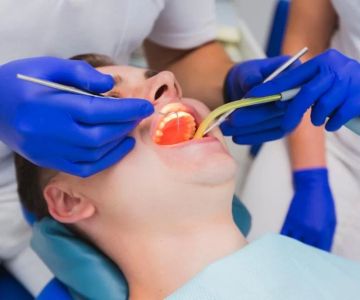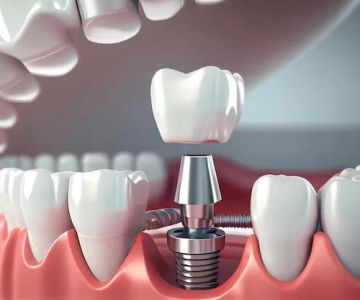Comprehensive Guide to Braces for Teeth Straightening: Types, Benefits, and Cost
- 1. Types of Braces
- 2. Benefits of Braces for Teeth Straightening
- 3. How Braces Work
- 4. The Cost of Braces
- 5. Personal Case Stories
- 6. Conclusion
1. Types of Braces
When it comes to braces for teeth straightening, there are several types to choose from. Understanding the options is crucial in making the right decision for your orthodontic treatment. The two most common types are traditional metal braces and clear braces.
Traditional Metal Braces
These are the most common and widely used type of braces. Traditional metal braces consist of brackets, wires, and elastic bands, working together to shift teeth into their correct positions over time. While they are the most visible option, they are also the most effective for severe cases of misalignment.
Clear Braces
For those who prefer a more discreet option, clear braces are a great alternative. These braces use clear brackets and wires that blend more naturally with your teeth. They provide a less noticeable appearance while still delivering effective results.
Invisalign
Invisalign is another popular option that uses clear, removable aligners instead of traditional brackets and wires. This type of braces is virtually invisible, making it a favored choice for many adults and teens. However, it is suitable for mild to moderate cases of misalignment.
2. Benefits of Braces for Teeth Straightening
Braces not only enhance the appearance of your smile but also offer numerous health benefits. Here are some key advantages:
Improved Oral Health
Braces help align your teeth properly, making it easier to clean them. Properly aligned teeth reduce the risk of plaque buildup, which can lead to cavities and gum disease.
Better Bite Function
Misaligned teeth can affect your bite, making it difficult to chew properly. Braces improve your bite, ensuring that your teeth meet correctly when you close your mouth.
Enhanced Confidence
A beautiful smile can boost your self-esteem. Straightening your teeth with braces can have a significant impact on how you feel about your appearance, leading to greater confidence in social and professional settings.
3. How Braces Work
Braces work by gradually shifting your teeth into better alignment through the application of continuous pressure. The brackets are attached to your teeth, and the wire threaded through them exerts gentle pressure that moves your teeth over time.
The Process
The process typically begins with an initial consultation where your orthodontist evaluates your dental condition. Once braces are placed, adjustments are made periodically to ensure your teeth are moving in the right direction. This process can take anywhere from 18 months to 3 years, depending on the severity of the misalignment.
What to Expect
Wearing braces can feel uncomfortable at first, and you may experience some soreness as your teeth begin to move. However, over time, this discomfort decreases, and you will begin to see visible improvements in your smile.
4. The Cost of Braces
The cost of braces can vary significantly depending on several factors, including the type of braces, the severity of the misalignment, and the duration of the treatment. On average, traditional metal braces can cost between $3,000 to $7,000, while clear braces and Invisalign can range from $4,000 to $8,000 or more.
Insurance and Financing Options
Many dental insurance plans cover a portion of the cost of braces, so it's essential to check with your insurance provider for details. Additionally, many orthodontists offer financing plans to help manage the cost of treatment over time.
5. Personal Case Stories
Hearing from people who have undergone braces treatment can provide valuable insight into the experience. Take Sarah, for example, who wore metal braces for two years. She found that the discomfort was minimal, and the results were well worth it. Her confidence grew significantly after seeing the final outcome of her straightened smile.
Similarly, John opted for clear braces and was thrilled with the discreet appearance during his treatment. He said, "I was worried about how people would react to me wearing braces, but the clear braces made it almost unnoticeable. It felt like a small change that had a huge impact on my life."
6. Conclusion
Braces for teeth straightening offer both cosmetic and health benefits, making them an investment in your future. Whether you choose traditional metal braces, clear braces, or Invisalign, there is an option suited to your needs and preferences.
If you're considering braces, consult with an orthodontist to determine the best treatment plan for your situation. Ready to transform your smile? Learn more about braces and other orthodontic treatments at Dentistry Toothtruth.







 Alliance Orthodontics4.0 (23 review)
Alliance Orthodontics4.0 (23 review) Growing Smiles of Voorhees4.0 (2464 review)
Growing Smiles of Voorhees4.0 (2464 review) Dr. David Miller DDS5.0 (1 review)
Dr. David Miller DDS5.0 (1 review) Michael C. Byars, DDS5.0 (67 review)
Michael C. Byars, DDS5.0 (67 review) West Loop Dental Associates4.0 (24 review)
West Loop Dental Associates4.0 (24 review) David A. Goodman, DMD Alan C. Ko, DMD Advanced Cosmetic & Prosthetic Dentistry5.0 (333 review)
David A. Goodman, DMD Alan C. Ko, DMD Advanced Cosmetic & Prosthetic Dentistry5.0 (333 review) The Importance of Oral Health Education During Pregnancy for a Healthy Pregnancy
The Importance of Oral Health Education During Pregnancy for a Healthy Pregnancy Best Tips for Brushing Your Teeth Properly for Healthy Gums: Essential Techniques for Oral Health
Best Tips for Brushing Your Teeth Properly for Healthy Gums: Essential Techniques for Oral Health Why Skipping Dental Checkups Can Lead to Bigger Oral Health Problems
Why Skipping Dental Checkups Can Lead to Bigger Oral Health Problems Advantages of Porcelain Dental Restorations
Advantages of Porcelain Dental Restorations How Can Diabetes Cause Tooth and Gum Problems? Preventing and Managing Oral Health Issues
How Can Diabetes Cause Tooth and Gum Problems? Preventing and Managing Oral Health Issues Healthy Habits for Promoting Good Oral Health and Hygiene: Tips for a Healthy Smile
Healthy Habits for Promoting Good Oral Health and Hygiene: Tips for a Healthy Smile